Storming of Cirencester, 2nd February 1643
Cirencester, a town I knew quite well, having lived there for a short period of time in the early 90s. Little did I know at the time that the town had a role in the Civil War (the Roman connection, along with 'quaintness' were Ciren's indelible marks at the time).
Cirencester changed hands a number of times during the Civil War due to it's strategic positioning on the approach to the West Country. Originally held by the Royalists it was taken by Parliamentarian forces in 1642.
Cirencester changed hands a number of times during the Civil War due to it's strategic positioning on the approach to the West Country. Originally held by the Royalists it was taken by Parliamentarian forces in 1642.
The most significant engagement took place on the 2nd February 1643 when Prince Rupert took the town. Rupert marched from Oxford and camped overnight at Cirencester Park. He attacked the next day at noon, the bloody battle lasting four hours.
In the initial assault he bombarded the town from Ceciley Hill, and attacked and took the heavily defended Giffard's House. Rupert's army found that the buildings outside the town walls were still intact so were able to use the cover that they afforded to great advantage. The line of the Royalist advance took the course of Black Jack Street. Many buildings were set on fire to provide a smoke screen to protect the advance on the walls.
Despite some close fighting in the streets of the town the defenders were over run by a far superior (in numbers) force. Rupert taking 1200 prisoners, 5 cannon and 17 standards.
The prisoners were locked in the Church of St John the Baptist, without food or water - locals smashed the windows to pass sustenance through to the captives inside. The prisoners would later be marched to Oxford and captivity in the Castle, where conditions were so brutal that many men changed allegiance and fought for the King rather than endure such hardships.
Fast forward to September 1643... The Earl of Essex had marched from London to relieve the besieged town of Gloucester; and now had to return his army safely to London, out of the clutches of the Royalists tracking his every move.
Essex had marched to Tewkesbury, and slipped out of the town during the night of the 14th of September thereby evading his Royalist pursuers. He entered Ciren in the early hours of the 15th and took the town easily. he captured two Regiments of Foot and 40 wagons of supplies destined for Oxford. The Royalist Army, had literally been caught napping at their position in Evesham and set off in hot pursuit. They would both eventually meet at the First Battle of Newbury a few days later.
What's There Now?
Cirencester Park, where Rupert's Army camped is now a deer park. The large Bathurst estate can be accessed on foot from close to the Museum. The house was known as Mr Poole's house at the time of the battle, Parliament had positioned two cannon here to defend the town.
Corinium Museum has a display relating to the town's involvement in the Civil War
In the initial assault he bombarded the town from Ceciley Hill, and attacked and took the heavily defended Giffard's House. Rupert's army found that the buildings outside the town walls were still intact so were able to use the cover that they afforded to great advantage. The line of the Royalist advance took the course of Black Jack Street. Many buildings were set on fire to provide a smoke screen to protect the advance on the walls.
Despite some close fighting in the streets of the town the defenders were over run by a far superior (in numbers) force. Rupert taking 1200 prisoners, 5 cannon and 17 standards.
The prisoners were locked in the Church of St John the Baptist, without food or water - locals smashed the windows to pass sustenance through to the captives inside. The prisoners would later be marched to Oxford and captivity in the Castle, where conditions were so brutal that many men changed allegiance and fought for the King rather than endure such hardships.
Fast forward to September 1643... The Earl of Essex had marched from London to relieve the besieged town of Gloucester; and now had to return his army safely to London, out of the clutches of the Royalists tracking his every move.
Essex had marched to Tewkesbury, and slipped out of the town during the night of the 14th of September thereby evading his Royalist pursuers. He entered Ciren in the early hours of the 15th and took the town easily. he captured two Regiments of Foot and 40 wagons of supplies destined for Oxford. The Royalist Army, had literally been caught napping at their position in Evesham and set off in hot pursuit. They would both eventually meet at the First Battle of Newbury a few days later.
What's There Now?
Cirencester Park, where Rupert's Army camped is now a deer park. The large Bathurst estate can be accessed on foot from close to the Museum. The house was known as Mr Poole's house at the time of the battle, Parliament had positioned two cannon here to defend the town.
Corinium Museum has a display relating to the town's involvement in the Civil War
 |
| Hodgekinson Paine, shot dead in the storming of Cirencester dying only yards from his front door, with the colours in his hand. He was 38, leaving behind a widow and five children |
There are also a small number of items from the Battle of Stow-on-the-Wold, and a coin hoard found in Weston-sub-Edge
Black Jack Street is still there and retains much of it's historic charm, despite selling itself as Ciren's trendy quarter.
The Church of St John the Baptist, which was used as a prison, is located close to the Market Place.
The only real hurdle in Rupert's way into Cirencester was the heavily defended Giffard's House, now called Barton Mill House, you can find it on Barton Lane.
Fast forward to the Third Civil War and 1651: the Fleece Hotel is believed to have been used by Charles II as a hiding place on his escape from the Battle of Worcester
Postcodes for SatNavs
Market Place parking (suitable for all locations) GL7 2PB
Black Jack Street GL7 2AA
Church of St John the Baptist, Market Place GL7 2NX
Barton Mill House, Barton Lane GL7 2EE
Corinium Mueum, Park Street GL7 2BX
Cirencester Park, Cecily Hill GL7 6LA
The Fleece Hotel, Market Place GL7 2NX
Black Jack Street is still there and retains much of it's historic charm, despite selling itself as Ciren's trendy quarter.
 |
| Black Jack Street |
The Church of St John the Baptist, which was used as a prison, is located close to the Market Place.
The Church's volunteers will happily explain that the reason it has clear glazed windows is due to Oliver Cromwell ordering his men to destroy the original stained glass because he didn't approve of the imagery. Cromwell does seem to get the blame for a lot of things that he didn't do, at places he didn't visit!
 |
| Old Knoll was 'guilty' of a lot of things, but not breaking these windows |
The only real hurdle in Rupert's way into Cirencester was the heavily defended Giffard's House, now called Barton Mill House, you can find it on Barton Lane.
 |
| Charles II's coat of arms, Church of St John the Baptist |
Fast forward to the Third Civil War and 1651: the Fleece Hotel is believed to have been used by Charles II as a hiding place on his escape from the Battle of Worcester
.JPG) |
| The Fleece: the blue part of the pub is C17th, the timber frame part Edwardian |
Postcodes for SatNavs
Market Place parking (suitable for all locations) GL7 2PB
Black Jack Street GL7 2AA
Church of St John the Baptist, Market Place GL7 2NX
Barton Mill House, Barton Lane GL7 2EE
Corinium Mueum, Park Street GL7 2BX
Cirencester Park, Cecily Hill GL7 6LA
The Fleece Hotel, Market Place GL7 2NX
If you enjoyed reading this, or any of the other posts, please consider supporting the blog.
Thanks.







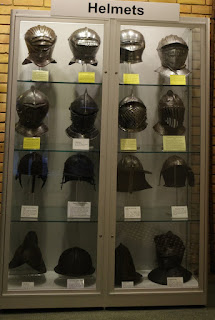
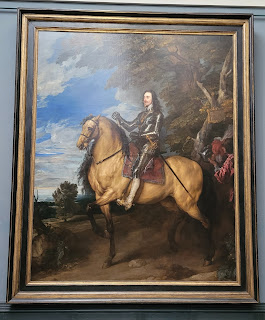
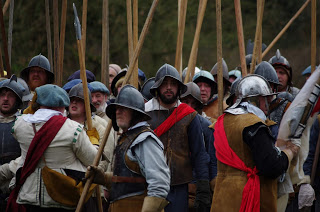

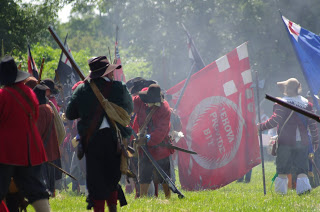
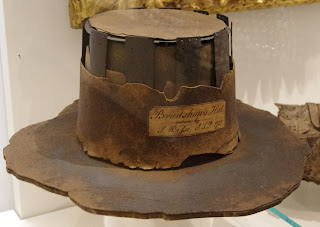
Comments
Post a Comment